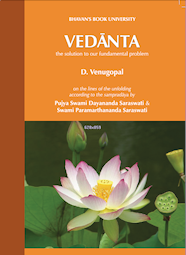 The ‘Real I’ verses the ‘Presumed I’ – An Examination of chidAbhAsa
The ‘Real I’ verses the ‘Presumed I’ – An Examination of chidAbhAsa
Ramana Maharshi’s instruction to seekers to ask themselves ‘Who am I?’ is lauded by many modern Western teachers as sufficient, on its own, to lead to enlightenment. I suggest that this is not strictly true; that what it can do is rather to give us insight into what we are not and thereby point us in the direction of traditional teachings to learn about our real nature. It is inciting us to conduct Self-inquiry in the proven manner, i.e. by listening to a qualified teacher interpret the scriptures, rather than merely providing a mantra or formula to provide an answer directly.
An explanation of how traditional teaching can lead us to an understanding of who I am might begin with an analysis of our three states of consciousness – this is the so-called avasthA traya prakriyA of traditional advaita.
We almost certainly begin with the belief that who-I-really-am is only fully present in the waking state. In the dream state, I am not in command of my mental faculties so that the mind free-wheels outside of my control even though I am not actually unconscious. And we no doubt accept the deep sleep state as one in which mind and body rest and recuperate in order to be ready for the trials that the next day may bring. According to this interpretation, consciousness in deep sleep is in a resting state, as indicated by the lowered activity shown by EEG displays. (This view, also supported by many Western philosophers, claims that consciousness is a by-product or ‘epiphenomenon’ of the brain; an evolutionary advantageous development to enable an animal to find food and mate more efficiently than before. This is also the view of the chArvAka-s or materialists of thousands of years ago – it is certainly not new!) Continue reading






